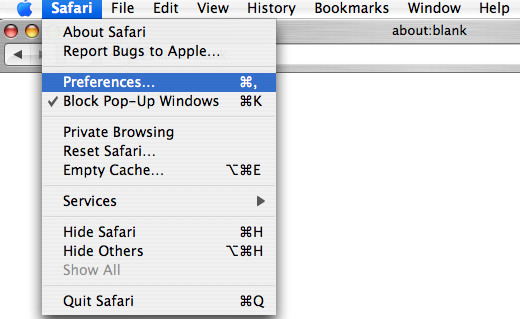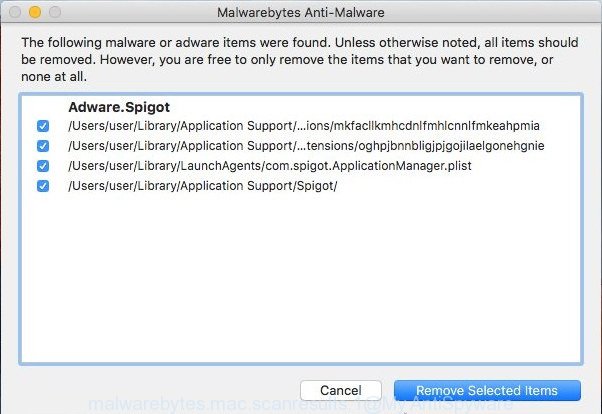What is AssistiveModule?
AssistiveModule is an adware program that targets Mac computers. Adware is a form of software designed to throw ads up on your internet browser screen. It generates money for its creator by occasionally displaying a large amount of ads and popup deals. You might experience a change in your start page or search provider, new tabs opening or even a redirect to unsafe webpages.

Unwanted ads
Does adware steal your personal data? Adware can install a component that enables its developer to track which webpages you visit, which products you look at upon those pages. They are then able to select the type of ads they show you. So, if you had adware software on your computer, there is a good chance you have another that is gathering and sharing your privacy data with third parties, without your consent.
How does AssistiveModule get on your Apple Mac
In most cases adware come bundled with various freeware. Therefore it is very important at the stage of installing programs downloaded from the Web carefully review the Terms of use and the License agreement, as well as to always choose the Advanced, Custom or Manual installation method. In this method, you can turn off all optional web-browser extensions, which will be added along with the desired application.
Threat Summary
| Name | AssistiveModule, Assistive Module 1.0 app |
| Type | adware, PUP (potentially unwanted program), popup advertisements, pop-up virus, pop-ups |
| Symptoms |
|
| Removal | AssistiveModule removal guide |
How to Remove AssistiveModule
The answer is right here on this web page. We have put together simplicity and efficiency. It will help you easily to free your Mac of AssistiveModule adware. Moreover, you can choose manual or automatic removal solution. If you’re familiar with the computer then use manual removal, otherwise use the free anti malware utility designed specifically to get rid of adware. Of course, you can combine both methods. Read this manual carefully, bookmark it or open this page on your smartphone, because you may need to exit your web browser or reboot your Apple Mac.
To remove AssistiveModule, use the following steps:
- How to remove AssistiveModule without any software
- Automatic Removal of AssistiveModule adware software
- How to stay safe online
- Finish words
How to remove AssistiveModule without any software
This part of the blog post is a step-by-step tutorial that will show you how to remove AssistiveModule adware manually. You just need to follow every step. In this case, you do not need to install any additional tools.
Delete potentially unwanted programs using the Finder
First, go to the Finder and uninstall questionable applications, all programs you don’t remember installing. It is important to pay the most attention to software you installed just before AssistiveModule ads appeared on your internet browser. If you do not know what a program does, look for the answer on the Internet.

- Open the Finder.
- Click “Applications”.
- It will open a list of all apps installed on the MAC OS.
- Scroll through the all list, and uninstall dubious and unknown applications. Pay maximum attention to the program you installed last.
- Drag the suspicious application from the Applications folder to the Trash.
- Empty Trash.
Remove AssistiveModule from Google Chrome
Reset Google Chrome settings will help you to completely reset your internet browser. The result of activating this function will bring Chrome settings back to its default values. This can remove AssistiveModule ads and disable malicious add-ons. Essential information like bookmarks, browsing history, passwords, cookies, auto-fill data and personal dictionaries will not be removed.

- First start the Google Chrome and press Menu button (small button in the form of three dots).
- It will show the Chrome main menu. Select More Tools, then press Extensions.
- You will see the list of installed extensions. If the list has the extension labeled with “Installed by enterprise policy” or “Installed by your administrator”, then complete the following instructions: Remove Chrome extensions installed by enterprise policy.
- Now open the Chrome menu once again, click the “Settings” menu.
- You will see the Chrome’s settings page. Scroll down and press “Advanced” link.
- Scroll down again and press the “Reset” button.
- The Chrome will open the reset profile settings page as shown on the screen above.
- Next click the “Reset” button.
- Once this process is complete, your browser’s start page, search provider and new tab will be restored to their original defaults.
- To learn more, read the article How to reset Chrome settings to default.
Remove AssistiveModule adware software from Safari
By resetting Safari web browser you revert back your internet browser settings to its default state. This is good initial when troubleshooting problems that might have been caused by AssistiveModule adware.
Run Safari web-browser. Next, choose Preferences from the Safari menu.

First, click the “Security” icon. Here, select “Block pop-up windows”. It will block some types of pop ups.
Now, click the “Extensions” icon. Look for suspicious extensions on left panel, choose it, then press the “Uninstall” button. Most important to get rid of all suspicious extensions from Safari.
Once complete, check your startpage and search engine settings. Click “General” icon. Make sure that the “Homepage” field contains the website you want or is empty.

Make sure that the “Search engine” setting shows your preferred search provider. In some versions of Safari, this setting is in the “Search” tab.
Delete AssistiveModule adware software from Firefox
If the Mozilla Firefox settings such as search engine, new tab page and homepage have been changed by the adware, then resetting it to the default state can help. Essential information like bookmarks, browsing history, passwords, cookies, auto-fill data and personal dictionaries will not be removed.
First, open the Firefox and click ![]() button. It will show the drop-down menu on the right-part of the web-browser. Further, press the Help button (
button. It will show the drop-down menu on the right-part of the web-browser. Further, press the Help button (![]() ) as displayed in the following example.
) as displayed in the following example.

In the Help menu, select the “Troubleshooting Information” option. Another way to open the “Troubleshooting Information” screen – type “about:support” in the browser adress bar and press Enter. It will show the “Troubleshooting Information” page as displayed in the figure below. In the upper-right corner of this screen, press the “Refresh Firefox” button.

It will open the confirmation dialog box. Further, press the “Refresh Firefox” button. The Mozilla Firefox will start a procedure to fix your problems that caused by the AssistiveModule adware. Once, it’s complete, press the “Finish” button.
Automatic Removal of AssistiveModule adware software
Use malicious software removal tools to remove AssistiveModule automatically. The free programs utilities specially designed for hijacker infections, adware software and other potentially unwanted programs removal. These tools can remove most of adware software from Chrome, Firefox and Safari. Moreover, it may remove all components of adware from Windows registry and system drives.
Get rid of AssistiveModule with MalwareBytes Free
Remove AssistiveModule manually is difficult and often the adware is not completely removed. Therefore, we suggest you to use the MalwareBytes which are completely clean your MAC system. Moreover, this free program will help you to get rid of malicious software, PUPs, toolbars and hijacker that your machine can be infected too.

MalwareBytes can be downloaded from the following link.
20945 downloads
Author: Malwarebytes
Category: Security tools
Update: September 10, 2020
Once the download is done, run it and follow the prompts. Click the “Scan” button . MalwareBytes AntiMalware application will scan through the whole MAC OS for the AssistiveModule adware software. A system scan may take anywhere from 5 to 30 minutes, depending on your MAC system. When a malware, adware or PUPs are found, the number of the security threats will change accordingly. Wait until the the scanning is done. Once you’ve selected what you want to delete from your computer press “Remove Selected Items” button.
The MalwareBytes Anti Malware is a free program that you can use to remove all detected folders, files, malicious services and so on.
How to stay safe online
In order to increase your security and protect your computer against new annoying ads and harmful web-sites, you need to run adblocker program that stops an access to harmful ads and web-sites. Moreover, the program can block the display of intrusive advertising, which also leads to faster loading of web sites and reduce the consumption of web traffic.

- Installing the AdGuard is simple. First you will need to download AdGuard by clicking on the link below.
AdGuard for Mac download
3753 downloads
Author: © Adguard
Category: Security tools
Update: January 17, 2018
- Once downloading is complete, start the downloaded file. You will see the “Setup Wizard” program window. Follow the prompts.
- Once the installation is complete, click “Skip” to close the installation application and use the default settings, or click “Get Started” to see an quick tutorial which will allow you get to know AdGuard better.
- In most cases, the default settings are enough and you do not need to change anything. Each time, when you run your MAC system, AdGuard will launch automatically and stop undesired ads, block harmful and misleading web pages.
Finish words
After completing the steps shown above, your MAC should be clean from this adware and other malicious software. The Google Chrome, Safari and Mozilla Firefox will no longer display the AssistiveModule ads when you surf the Internet. Unfortunately, if the few simple steps does not help you, then you have caught a new adware, and then the best way – ask for help.
Please create a new question by using the “Ask Question” button in the Questions and Answers. Try to give us some details about your problems, so we can try to help you more accurately. Wait for one of our trained “Security Team” or Site Administrator to provide you with knowledgeable assistance tailored to your problem with the AssistiveModule adware.

















